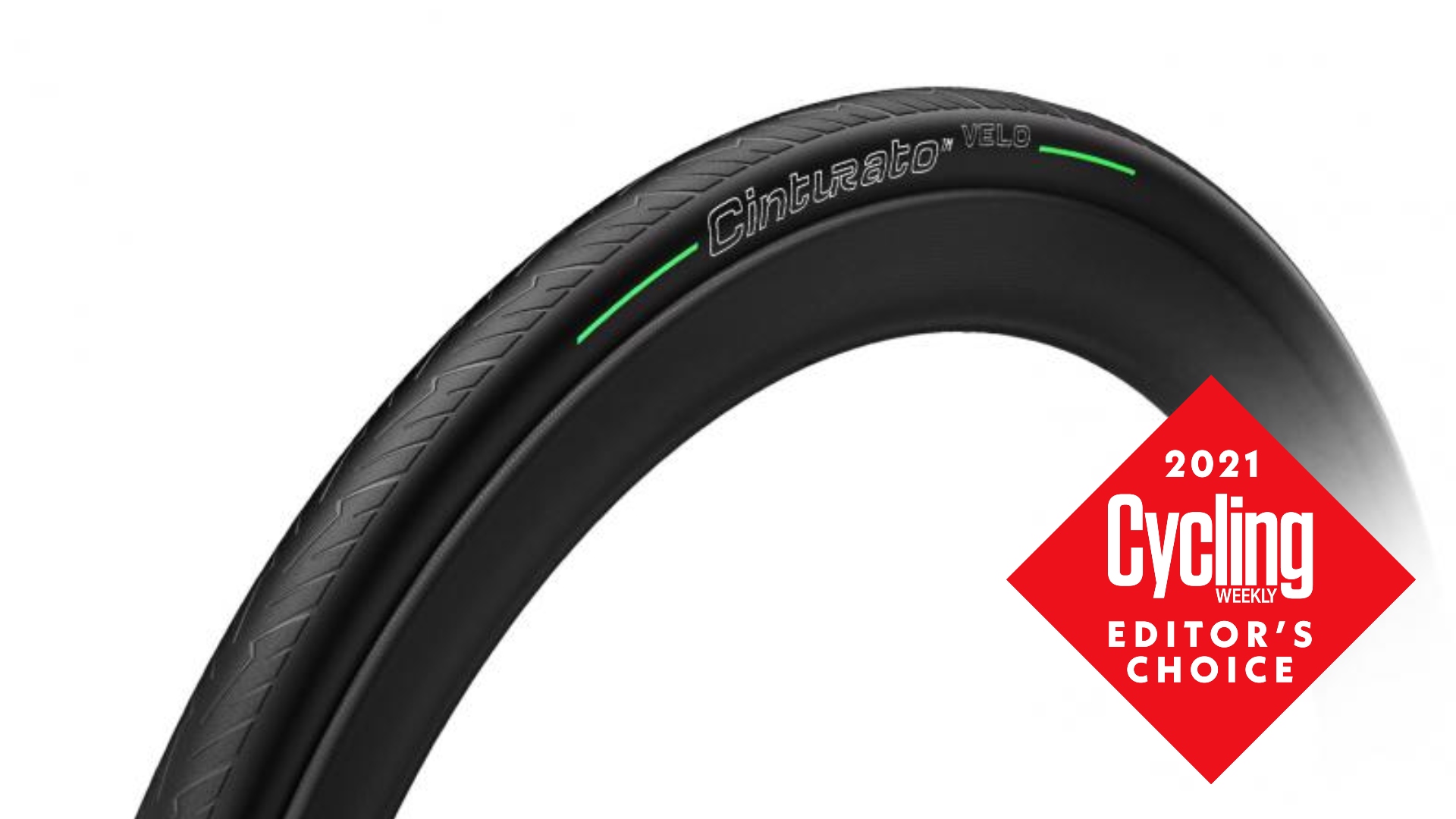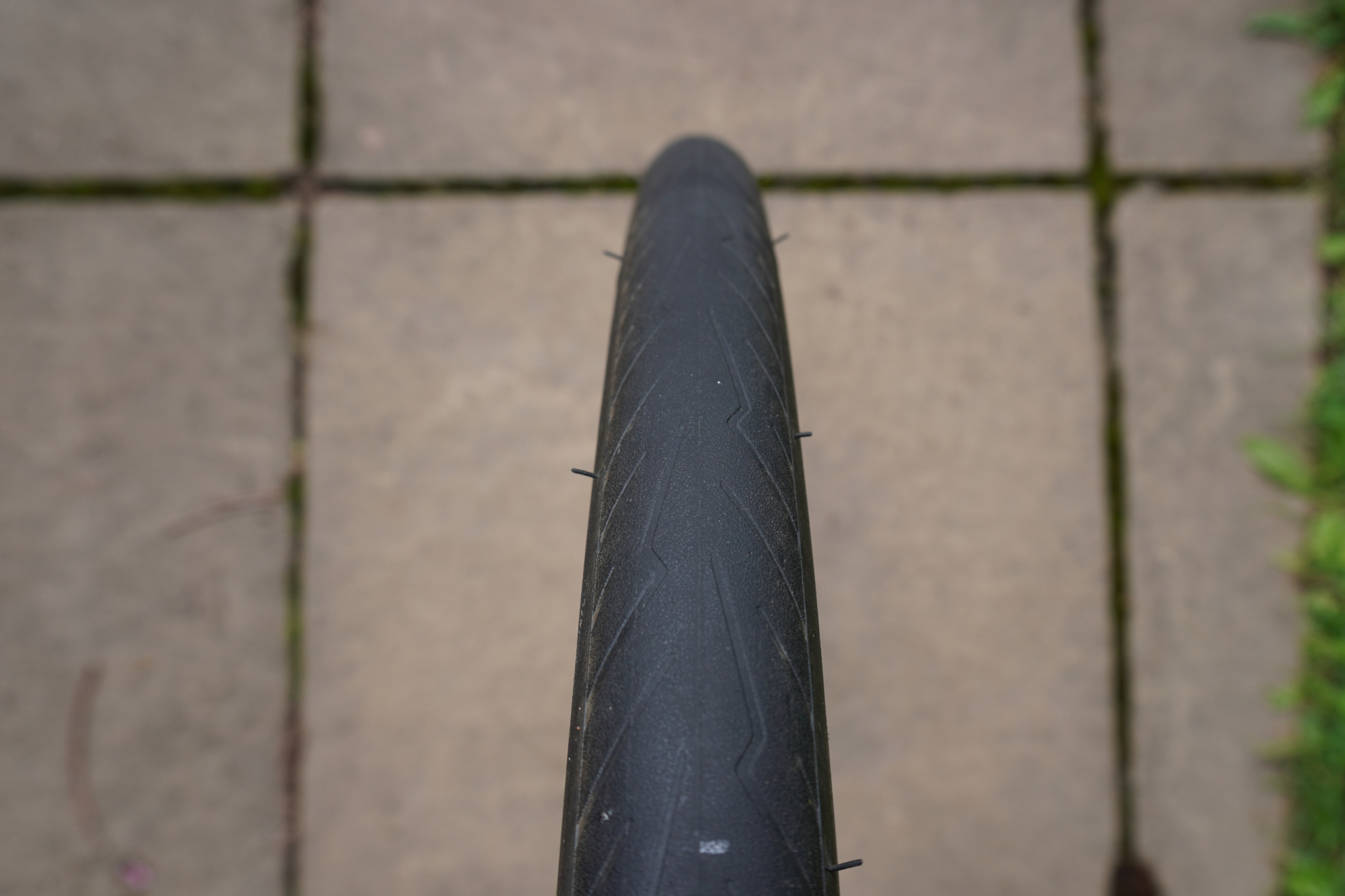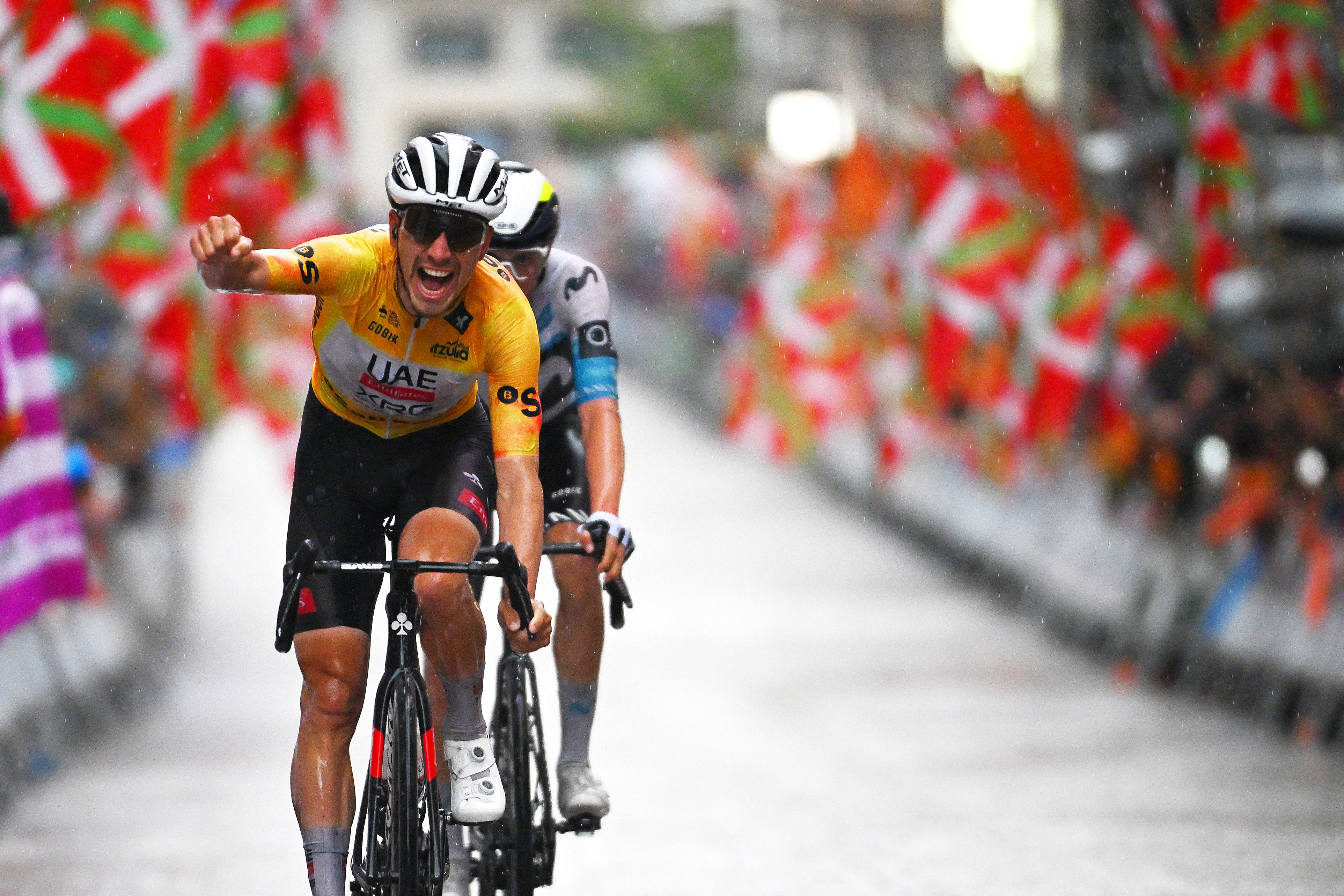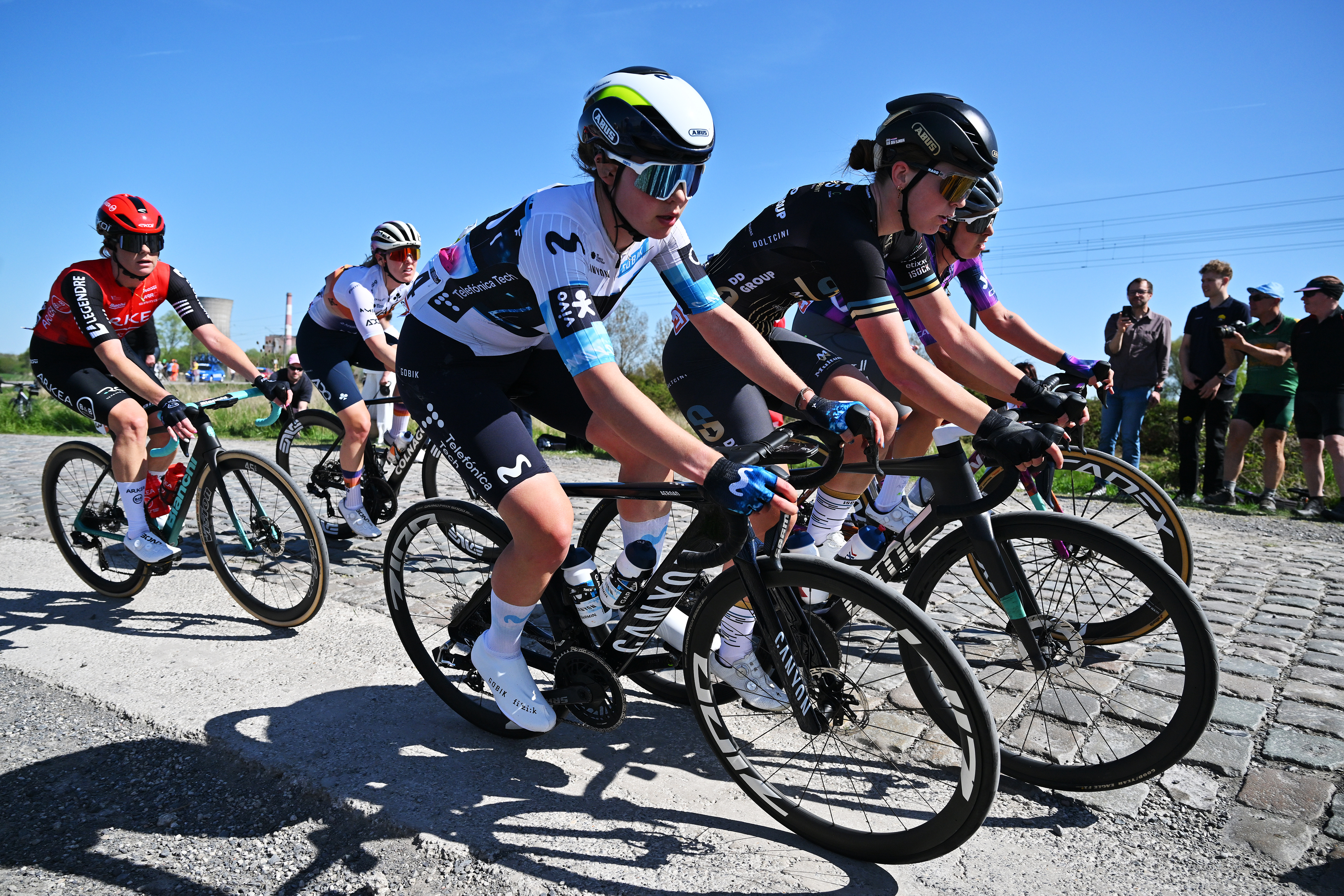Pirelli Cinturato Velo TLR review
Highly puncture resistance but still reasonably fast rolling, could these be the perfect training tyre?

Pirelli’s Cinturato Velo TLR tyres offer the perfect blend of rolling resistance, grip and puncture resistance for a set of training tyres. They didn’t puncture once while on test, even when taken on some quite questionable roads and the odd, even more questionable, trail. Back on the tarmac, compared to other winter tyres, the Cinturato Velo TLRs felt refreshingly fast, helping to keep the average speed up on those long training rides. Coming in widths from 24 to 35mm, there’s a variety of options to suit a range of riding requirements.
-
+
Highly puncture resistant
-
+
Reasonably low rolling resistance
-
+
Good range of width options
-
-
Nothing!
You can trust Cycling Weekly.

At the time of writing, these tyres were listed as not being compatible with hookless rims that have an internal rim width of over 21mm. That advice has since been rescinded and these tyres are recommend for use with all road wheel internal rim widths - for context, Zipp's 353 NSW wheels have an internal width of 25mm .
The Pirelli Cinturato Velo is designed to offer a high level of puncture protection – but without the associated high rolling resistance that can sap the joy out of riding.
Such a combination of speed and robustness is something of a holy grail for a set of training tyres, but we’ve found the Italian brand to be a pretty consistent performer – so the bar has been set high for these tyres.
Pirelli Cinturato Velo TLR construction
Although tubeless ready, the Cinturato Velos don’t rely on the sealant for their puncture protection – an “Aramid breaker” underneath the tread is designed to prevent flints and thorns from working their way through the carcass and piercing the tubes, should you choose to set the tyres up that way.
Underneth the breaker, there’s a further protective layer which stretches from bead-to-bead, bolstering the strength of the sidewalls and providing a bit of extra protection under the centre tread. The SmartNET Silica compound is claimed by Pirelli to “ensure grip safety in all weather conditions”.
The sizes available include 700x24c, 26c, 28c, 32c, and 35c, giving plenty of options for classic winter bikes with tight clearance due to mudguards, all the way up to rubber for gravel bikes seeking a bit of extra speed.
It’s worth noting that the tyres do come with a warning not to mount them on hookless wheels with an internal rim width greater than 21mm. This seems quite conservative, as Zipp’s 404 Firecrest wheels are hookless with an internal rim width of 23mm and are optimised for tyres as narrow as 25mm – I wouldn’t have expected to have had any troubles mounting a 32c Cinturato to those wheels.
But it is much better to be safe than sorry, so I was careful to follow the recommendation, nevertheless.
Pirelli Cinturato Velo TLR ride quality
Setting up the 32mm version of these tyres with tubeless valves and sealant, they popped onto a pair of DT Swiss P1800 Spline and, lately, a pair of Hunt 35 Carbon Gravel X-Wide wheels without causing a fuss. No blistered thumbs and no leaking of sealant or air.
The air retention between rides wasn’t bad either – although not quite on a par with a butyl inner tube, it was good enough that they wouldn’t get unconscionably squidgy if I went several rides without topping them up.
Heading out onto the road, the Cinturatos really quite impressed. Of course, if you’re coming to them from a set of Continental GP5000s or Schwalbe Pro Ones, the Cinturatos are going to feel a little slow - they are much more focused on resiliance. However, they didn’t leave me wanting in terms of grip, whether in the wet or the dry.
But what’s really most pertinent is how the Cinturatos stack up against similarly puncture resistant tyres – and compared to the Schwalbe Durano DD and Continental Gatorskins, these ones are palpably faster. Admittedly my experience of both those winter tyres is in the 25c width, so pitting them against the 32c Cinturatos is a little apples and oranges – but that Pirelli’s offering feels so much quicker is still somewhat telling.

As you would hope, I didn’t get a single puncture while I had these on test. Setting them up tubeless, rather than with tubes, will have stacked the deck a little more in Pirelli’s favour – but even then, I didn’t spot any tell-tale signs of sealant splattering the bike, so I’m pretty confident the casing was doing its job.
I found the 32c size to be a pretty excellent sweet spot. On the roads they were pleasing quick, not turning the rides into anything of a slog. But with the extra volume – along with the protective casing – I had no compunction about taking them off the beaten track.
Fairly often, I’ll be planning a route and see a handy looking link between two roads, but a quick cross-check with Google Maps will reveal that the Street View car at least deemed the path unsuitable.
On a set of racier tyres – or a narrow pair of winter tyres – that would be the end of it, but on the Cinturatos I’ll happily give it a try, and on these routes I’ve yet to come across anything they haven’t been able to handle.
It is worth bearing in mind that the pressures you’ll need to run in the 32c width will be significantly lower that those you’d normally use on the road. At 68kg, I kept things to around 40psi, and that proved about the right balance.
Pirelli Cinturato Velo TLR value
At £54.99 per tyre, the Pirelli Cinturato Velo TLR is quite expensive. For comparison, the flagship Continental GP5000 tyres have an RRP of £59.99, while Vittoria’s mile munching Zaffiro Pro G2.0 tyres are only £29.99.
But then again, although the Cinturatos may not be a fancy race tyre, they still very high performance in terms of their combination of puncture resistance, grip, and rolling resistance. They might be quite expensive for a training tyre, but you are definitely getting a return on that investment.
Pirelli Cinturato Velo TLR verdict
In all, the Pirelli Cinturato Velo TLR tyres offer a great blend of puncture protection, grip and rolling resistance. They’re robust enough that punctures weren’t an issue, while still being fast enough that riding remained a pleasure.
They are quite an expensive proposition, being quite similar in price to a set of race tyres, but their performance is such that it doesn’t feel out of place – just that the balance of their attributes is a little differently distributed than that of a pure race tyre.
| Weight | 359g |
| Sizes | 700 x 24, 26, 28, 32 and 35c |

Thank you for reading 20 articles this month* Join now for unlimited access
Enjoy your first month for just £1 / $1 / €1
*Read 5 free articles per month without a subscription

Join now for unlimited access
Try first month for just £1 / $1 / €1
Get The Leadout Newsletter
The latest race content, interviews, features, reviews and expert buying guides, direct to your inbox!

After winning the 2019 National Single-Speed Cross-Country Mountain Biking Championships and claiming the plushie unicorn (true story), Stefan swapped the flat-bars for drop-bars and has never looked back.
Since then, he’s earnt his 2ⁿᵈ cat racing licence in his first season racing as a third, completed the South Downs Double in under 20 hours and Everested in under 12.
But his favourite rides are multiday bikepacking trips, with all the huge amount of cycling tech and long days spent exploring new roads and trails - as well as histories and cultures. Most recently, he’s spent two weeks riding from Budapest into the mountains of Slovakia.
Height: 177cm
Weight: 67–69kg
-
 'This race is absolutely disgusting': Peloton reacts to another brutal Paris-Roubaix Femmes
'This race is absolutely disgusting': Peloton reacts to another brutal Paris-Roubaix FemmesNow in its fifth edition, Paris-Roubaix Femmes is still a tough race, even for the best bike riders in the world
By Adam Becket Published
-
 ‘It’s the biggest win of my career’ says João Almeida after crushing Itzulia Basque Country success
‘It’s the biggest win of my career’ says João Almeida after crushing Itzulia Basque Country successUAE rider wins the final stage to finish almost two minutes clear of Enric Mas on GC, with Max Schachmann in third
By Peter Cossins Published
-
 'I have an exam in a month and a half' - Carys Lloyd becomes Paris-Roubaix's youngest ever rider
'I have an exam in a month and a half' - Carys Lloyd becomes Paris-Roubaix's youngest ever riderBritish teenager and A-Level student makes it to the velodrome on debut
By Tom Davidson Published